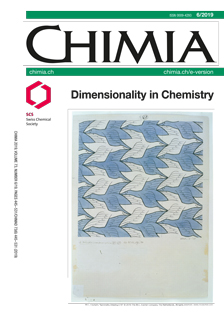From the Loom to the Laboratory: Molecular Textiles
DOI:
https://doi.org/10.2533/chimia.2019.455PMID:
38549206Keywords:
2d polymer, Interwoven network, Molecular textile, Molecular fabrics, Molecular weaveAbstract
Weaving is an old technique producing fabric materials by interlocking yarns, which we appreciate every day by wearing textiles. The splendid mechanical features of these macroscopic interwoven structures such as stability, flexibility, and shape adaptability raised the question whether or not such properties might also be observed on a molecular level. In this article, molecular analogues to textiles are discussed and strategies to molecular weaves are presented. While there are impressive structural similarities between the macroscopic and the molecular world, molecular textiles consisting of interwoven linear polymers remain a challenge. The scope of the article ranges from discrete superstructures like Solomon knots, over deoxyribonucleic acid (DNA) based nanoscale patterns and interwoven 2D sheets of coordination polymers, to weaving strategies interlinking small organic precursors.Funding data
-
Schweizerischer Nationalfonds zur Förderung der Wissenschaftlichen Forschung
Grant numbers 200020-178808
Grant numbers 200020-178808
Downloads
Published
2019-07-26
How to Cite
[1]
A. Di Silvestro, M. Mayor, Chimia 2019, 73, 455, DOI: 10.2533/chimia.2019.455.
Issue
Section
Scientific Articles
License
Copyright (c) 2019 Swiss Chemical Society

This work is licensed under a Creative Commons Attribution-NonCommercial 4.0 International License.







